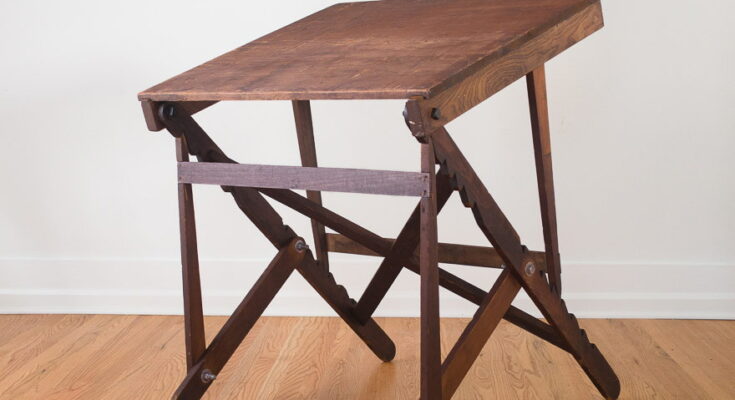When you think about the history of drawing boards, drafting tables may not be the first thing that comes to mind. They’re not anything flashy or special, and they’re more than likely a bit boring. And yet there are still some people who marvel at all the different ways you can use them — how they can make your work easier, how they can help you draw better. The history of drafting tables isn’t as straightforward as you might think. Its history is interesting, to say the least.
What is a Drafting Table?
Drafting tables are a type of bench used for drawing and designing. They are distinct from other types of benches because they have a slanted top, which makes it easier to draw on paper. Drafting tables are particularly useful for those who work in architecture, engineering, or design, but they can also be used for more general purposes like writing letters or creating crafts.
The first drafting tables were created around 1400 CE in Italy. They were made from wood and had no legs, so they were placed on the ground or on another table. The slanted top was designed to keep pens and pencils from rolling off the table while writing.
The modern drafting table was invented in 1820 by William Hutton of England who created it based on earlier designs from Jean-François Clément (France) and William Nicholson (England). Nicholson’s design was originally meant to be used by artists as well as engineers and architects; however he later decided not to market his design because he felt that artists would not need it enough to make it worthwhile financially. This decision allowed Hutton to take advantage of Nicholson’s idea and create his own version of an artist’s easel with an adjustable table top instead of just a fixed one like Nicholson’s design had
Early Drafting Tables
Early drafting tables were created for architects, surveyors and other professionals who needed to draw plans and designs. The design of these tables was critical in order to be able to work comfortably, quickly and efficiently.
Early drafting tables were designed with a sloped surface to allow for easier drawing on paper. They had a drawer under the table top where the user could store their pencils, pens and any other drawings they needed for reference while working on their project. The drawer also kept the entire desk clean so that there was no clutter when working on projects.
Drafting Machines
Drafting machines, also called drafting tables, are used to draw and create illustrations. They are usually located in an office or studio where they can be used by a single person or multiple people working together to create a single project.
The drafting machine consists of two parts: a flat surface and a set of rollers. The rollers run along the top of the table and provide smooth movement for any piece of paper that is placed on the table.
The first drafting machines were created in 1882 by William Burt, who was trying to develop a machine that would allow architects to sketch plans for buildings more quickly than they could with pencils alone. He patented his invention in 1883 under the name “Drafting Machine.”
Contemporary Drafting Tables
Contemporary drafting tables are a popular choice for designers and architects. They are often used to design buildings, models, and other architectural designs. The table is usually made of metal or wood and has a flat surface with a drawer in the center. These tables are usually found in schools, offices, art studios, and homes.
The first drafting table was invented by an architect named George Geddes in 1786. It was called the Drafting Machine and it was designed for use by architects who were working on plans for large buildings or other structures. The drafting machine was basically just a flat board with holes drilled into it so that screws could be inserted into them. The screw heads would then hold up pieces of paper that could be moved around on top of the board as needed to help design things like buildings or bridges by hand without having to use pencils or markers directly onto paper itself like you would normally do instead!
Drafting tables are a valuable design tool, but have changed with the times.
Whether you’re just starting your career or are a seasoned professional, drafting tables can still help make your work day more efficient and enjoyable. However, as technology continues to evolve, drafting tables will certainly have to keep up with the times. Based on what we have learned so far, we’ve offered some suggestions above for improving this classic tool. After all, if something isn’t broken, why fix it?
